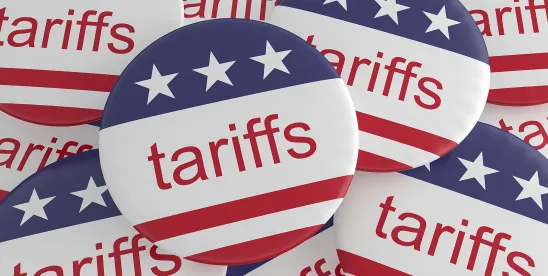Key Takeaways
- Tariff Deadline Extended to August 1: President Trump postponed the implementation of country-specific reciprocal tariffs from July 9 to August 1, giving countries additional time to negotiate deals with the U.S. before facing higher tariff rates.
- Tariff Increases Target Multiple Countries: Absent new agreements, 14 countries including Japan, South Korea and Thailand will face new tariffs ranging from 25 percent to 40 percent starting August 1. Additional nations have been formally notified that tariffs announced in April will be reinstated on the same date.
- U.S.-UK Trade Deal Reached: A framework deal with the UK was finalized, enhancing U.S. export access (especially for agriculture) and granting UK automakers limited access to reduced tariffs. However, several issues, such as steel and aluminum tariffs, remain unresolved.
- Legal Challenge Underway: The legality of President Trump’s reciprocal tariff authority is under judicial review. A U.S. Court of International Trade ruling found the tariffs may exceed presidential authority, and an appeal is scheduled for oral argument on July 31.
President Trump extended the pause on country-specific reciprocal tariffs—originally set to expire this Wednesday, July 9—until August 1, but notified certain countries of an anticipated tariff increase absent a deal. Specifically, the President announced new tariff rates ranging from 25 percent to 40 percent, effective August 1, for Bangladesh, Bosnia and Herzegovina, Cambodia, Indonesia, Japan, Kazakhstan, Laos, Malaysia, Myanmar, Serbia, South Africa, South Korea, Thailand and Tunisia unless the countries successfully negotiate with the U.S. to achieve lower rates before that date. The country-specific tariff rates originally announced on April 2 can be found here. The country-specific tariff rates announced yesterday can be found here.
In addition, the Administration announced that, beginning this week, letters will be issued to many other nations informing them that reinstatement of the higher, country-specific reciprocal tariff rates announced on April 2 will go into effect on August 1, providing more time for trade negotiations and deals to be executed.
The reciprocal tariff on China is on a separate timeline: China’s rate was increased to 125 percent on April 10 in response to the retaliatory actions taken by China against the United States, but President Trump temporarily reduced it to 10 percent for 90 days, effective May 14, as the two nations continued discussions on economic and trade relations.
Since the pause, the United States has reached a framework for a trade agreement with the United Kingdom (UK). On June 17, President Trump issued an executive order implementing the “U.S.-UK Economic Prosperity Deal” under which the UK committed to increasing market access for American exports, particularly for beef, ethanol, and certain other American agricultural exports, and to reducing or eliminating numerous non-tariff barriers that discriminated against U.S. products. In turn, the executive order provided, among other things, that UK car manufacturers can sell up to 100,000 vehicles to the United States at a reduced rate of 10 percent with any additional vehicles subject to the Section 232 tariff rate of 25 percent on automobiles. The United States also eliminated tariffs on UK engines and aircraft parts. Notwithstanding these commitments by both countries, there are several items left to be negotiated, including tariff-rate quotas for UK steel and aluminum products, which are currently subject to 25 percent Section 232 tariffs, as well as potential preferential treatment for UK pharmaceuticals and their ingredients continent upon findings on ongoing Section 232 investigations covering these products, and adoption of a “structured, negotiated approach” to addressing U.S. national security concerns regarding other sectors that may be subject to future Section 232 investigations.
The United States is also engaged in trade talks with several other countries, including Canada, Mexico and the European Union, in hopes of concluding agreements before the tariff deadline takes effect. Ongoing discussions with China and Vietnam have resulted in trade frameworks. China purportedly will ease U.S. access to Chinese magnets and critical minerals and the United States will lift export controls on Chinese goods. Vietnam agreed to grant the U.S. tariff-free access to its market while the United States will impose a 20 percent tariff on Vietnamese-origin imports and a 40 percent tariff on goods transshipped through Vietnam. Definitive trade deals with those countries, however, have not yet been signed.
In the meantime, there remains a possibility that President Trump’s reciprocal tariffs will ultimately be struck down as being unlawful. The Government’s appeal of the U.S. Court of International Trade’s recent decision finding that the reciprocal tariffs exceeded President Trump’s authority is currently pending at the U.S. Court of Appeals for the Federal Circuit with oral argument scheduled for July 31.







 />i
/>i

